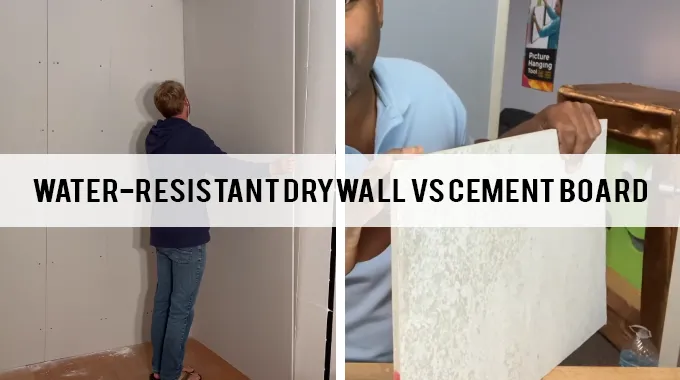Last Updated on September 13, 2023
If you want to protect your home from water damage, two materials frequently come up in the conversation: water-resistant drywall & cement board. Both are great options for construction projects as they provide superior protection against moisture, but which is recommended for home construction and renovation?
Though they may share the same characteristics in their use purposes, slight nuances such as board composition can make all the difference between construction and renovation. It’s essential to recognize the differences between these materials to make an informed decision and choose the best one.
Let’s dive into the similarities & differences between drywall and cement board, as well as what makes these materials great for waterproofing your space. We’ve got all the answers to help you decide which would be best suited for whatever project.
Water-Resistant Drywall vs Cement Board: Differences
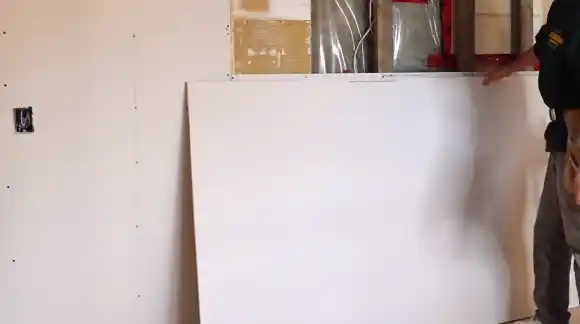
While drywall and cement board may have some similarities, there are several key differences between them, such as:
Board Composition
Water-resistant drywall (AKA Green Board) is made from gypsum sandwiched between two layers of heavy paper. On the other hand, the cement board (AKA Backer boards) is composed of a cement slurry reinforced with fiberglass mesh.
This makes drywall more lightweight than cement backer board. Also, cement boards typically come with a layer of waterproof coating for added protection against moisture damage.
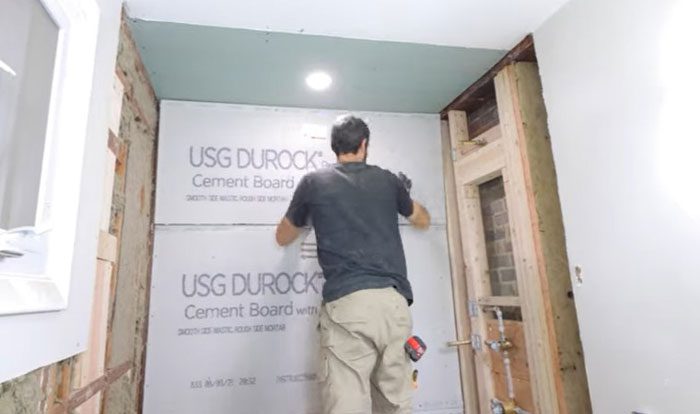
Water & Fire Resistance
Water-resistant drywall is generally considered more resistant to water than cement backer board due to its design which allows it to handle high levels of moisture without becoming porous or deteriorating. The gypsum in drywall is also more fire-resistant than cement, so it’s a better fire-resistance choice.
Cement boards are also somewhat resistant to water but not as much as drywall since they have a higher porosity level that can cause them to become damaged if exposed to too much moisture over time. Plus, cement boards are non-combustible but don’t resist fire-heat well.
Board Thickness
The standard thickness of drywall for walls is 1/2 inch, while for ceilings, the standard thickness is ⅝ inch. Conversely, the most common thicknesses for cement boards range from ¼ inch to ½ inch thick, depending on the application.
Thus, drywall tends to be thicker than cement backer board which can be beneficial for sound insulation or when heavier items need support, such as tiles or countertops in a kitchen renovation project.
Mold And Mildew Resistance
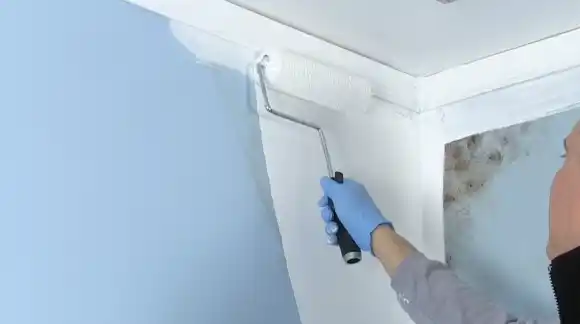
To prevent mold and mildew growth, drywall and cement boards should be adequately sealed with paint or other sealants after installation. This helps ensure they remain resistant to mold or mildew growth while providing an additional barrier against moisture damage over time.
Strength and Durability
Drywall is less strong than cement board but can still be effective for general walls and ceilings if properly installed. On the other hand, the cement backer board is extremely hard, dense, and impact resistant, making it an ideal choice for wet areas such as bathrooms or kitchens where moisture could damage regular drywall.
Ease of Installation
Installing water-resistant drywall requires a utility knife for cutting into the necessary shape before attaching it to the wall or ceiling. Plus, you don’t have to use a power saw to snap it.

Conversely, the cement board must be cut with a power saw before installation can begin due to its denseness. Consequently, installing cement boards takes longer than drywall but is much easier if you have the right tools.
Installation Cost
When factoring in installation costs, drywall is less expensive than cement board because of its lower weight and easier installation process.
But, the increased durability of cement backer boards can make up for the higher cost by reducing future repair needs due to water damage or other issues that may arise with regular drywall installations.
What are the Similarities Between Water-Resistant Drywall and Cement Board?

Water-resistant drywall and cement board share some similarities, including:
A: Water Resistance
Drywall and cement boards share a common characteristic regarding water resistance. Both are resistant to moisture damage. This is due to their composition. Drywall consists of a gypsum slurry core that is then covered by paper, while cement board consists of Portland cement, sand, and other ingredients that create a strong material once it sets.
Both materials also contain coatings or additives designed specifically to increase their water-resistant capabilities further. Also, both materials can be treated with sealants or paints to increase moisture resistance.
B: Using Purposes
The primary use for drywall is as an interior wall covering typically used in houses or other buildings. It provides a durable surface for hanging wallpaper or paint and hiding cables or air vents.
On the other hand, fiber cement backer board is usually used for exterior purposes such as siding outside buildings or around swimming pools or spas. Both materials come in various forms, such as panels, sheets, and blocks, depending on the application desired by the user.
As mentioned before, drywall and cement board offer great protection against moisture damage, making them ideal for areas where humidity may be an issue.
Water-Resistant Drywall or Cement Board: Which One is Best for Waterproofing?

Water-resistant drywall is the best choice for waterproofing due to its water-resistant properties. It can be easily sealed with a sealant, which provides an extra layer of protection against water seepage.
Alternatively, cement boards are more durable than drywall but porous, so they can grow mold if exposed to water. While cement backer board offers superior strength to drywall, its porous nature means it must be sealed with a watertight sealant.
Advantages of Using Water-Resistant Drywall Instead of Cement Board for Waterproofing
One of the most significant benefits of using non-porous drywall rather than a cement board for waterproofing is its cost-effectiveness. Drywall can be acquired at a much lower cost than cement boards, making it very economical for homeowners on a budget.
Also, drywall has the added benefit of being easy to install and less labor-intensive to put in place than cement boards. This means that time and money can be saved using drywall for waterproofing projects.
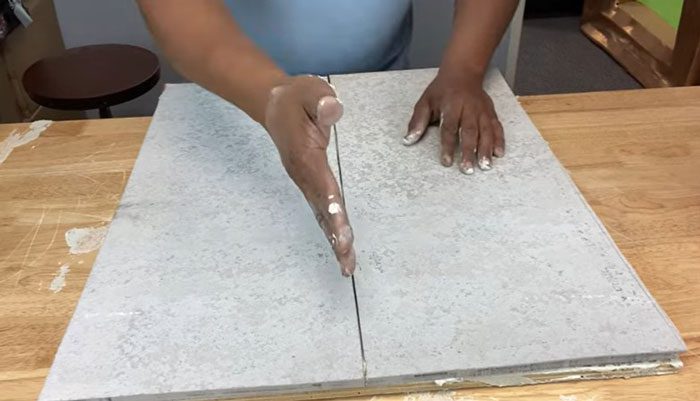
Furthermore, water-resistant drywalls are more aesthetically pleasing than cement boards because they come in different styles and textures that can fit any interior design scheme. They also offer better soundproofing capabilities by dampening noises from outside sources such as traffic or nearby construction work.
Finally, water-resistant drywalls are much lighter than cement boards, making them easier to transport and handle during installation. They also require less preparation than other waterproof materials, so there’s no need to worry about cutting or sawing anything before construction.
Can You Use Water-Resistant Drywall for Shower Wall?
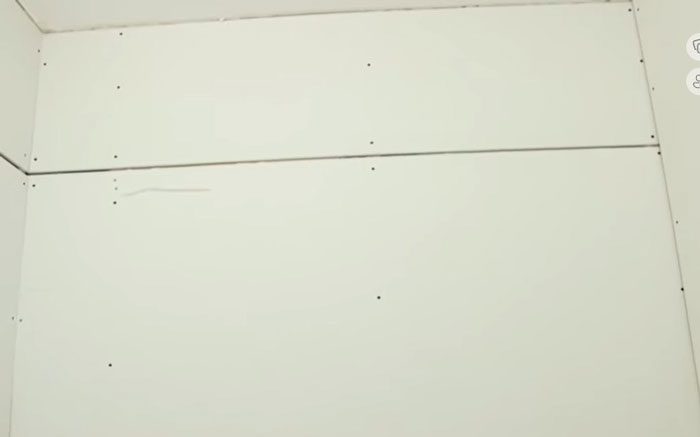
Yes, you can install water-resistant drywall for the shower walls, but it should be sealed with a waterproof sealer first. You must note that this type of drywall is not inherently waterproof and will need to be sealed with a waterproof sealant to prevent moisture from seeping through.
The sealant should be applied to the drywall surface before tiling or other finishes. Also, a vapor barrier should be installed behind the drywall to protect against moisture. Proper maintenance makes water-resistant drywall an excellent choice for shower walls.
What is the Cement Board Most Often Used for?
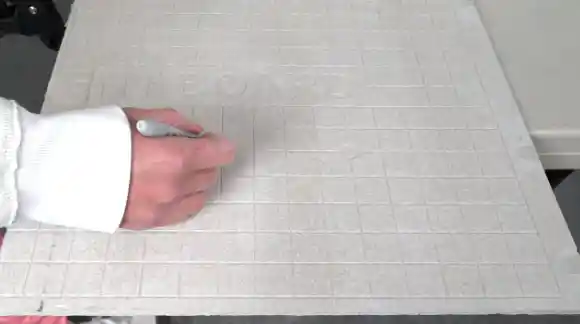
A fiber cement board is often used as a backing material for tile, brick, and stone installations. It is made from cement, sand, and fiberglass mesh combined into sheets or panels.
This board provides a strong substrate for these surfaces to ensure they are properly secured and do not come loose over time due to exposure to water or other elements.
Plus, the cement board helps create a strong bond between the tile/brick/stone installation and the wall behind it to reduce cracking or crumbling over time.
Can Water Seep Through Cement Board?
Yes, water can seep through cement boards due to the material’s porous nature. But, when properly sealed with a waterproof sealer or other protective coatings, the cement board becomes much more resistant to water penetration.
Also, if there are cracks or holes in the cement backer board due to improper installation, water could seep through those points of entry into the wall behind it.
To ensure no openings where moisture can enter, all joints must be filled with mortar, and all overlapping edges must be firmly pressed together when installing cement board on shower walls.
What is the Lifespan of Cement Board and Water-Resistant Drywall?
The lifespan of cement boards is over a hundred years, with some estimates suggesting it can last as long as 200 years under proper maintenance. Meanwhile, water-resistant drywall usually has a shorter lifespan of up to 70 years. These estimates are based on their exposure to moisture and humidity levels, which vary depending on their environment.
To ensure a longer life for both materials, users must use appropriate protective measures when installing them. For example, applying sealants or protective coatings may help prolong their lifespan considerably. Also, proper maintenance and regular inspections are required to ensure that the materials remain pristine.
Let Your Creativity Shine: Choose the Perfect Material for Each Project
When choosing between water-resistant drywall and cement board for a construction project that requires waterproofing, it’s essential to consider all factors, including cost, durability, installation difficulty, and overall effectiveness.
Water-resistant drywall is often cheaper than its counterpart but may require more frequent maintenance due to its susceptibility to moisture absorption. Alternatively, fiber cement board is more expensive but offers excellent resistance against water damage.
Ultimately the choice between these two materials depends on your personal preferences and the specific requirements of each project.
